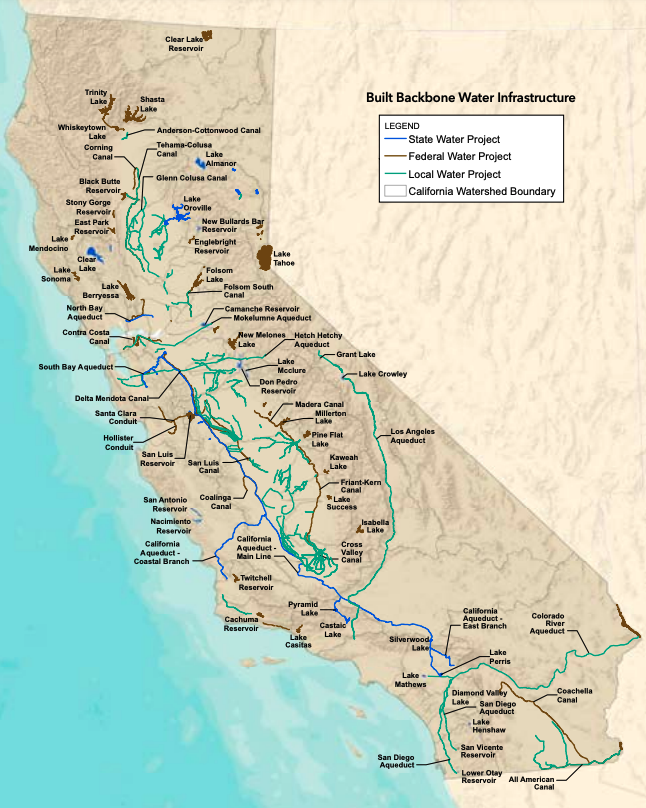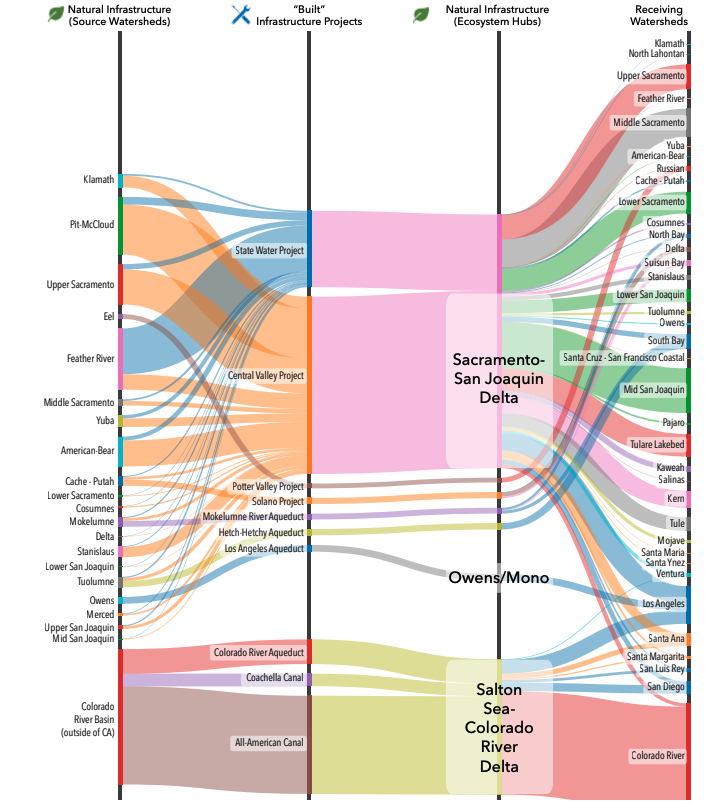
By Todd Manley
The most recent California Water Plan Update included a new concept for describing the varied natural and man-made elements that work together to store, manage and convey water resources in the state. In the plan, a distinction is made between “natural” and “built” backbone infrastructure. According to the Water Plan, “Backbone infrastructure refers to the natural and built systems that connect and benefit multiple regions throughout the state…[and] the State’s water resiliency depends on the effective management of these integrated backbone systems.” Successful water management in the state requires that the two types of backbone infrastructure are managed in coordination with each other.
The Water Plan provides the following definitions:
- Built backbone infrastructure: Human-constructed infrastructure that provides water management benefits to communities, ecosystems, and economies across regional and watershed boundaries. The California Aqueduct, Oroville Dam, and Los Angeles Aqueduct are examples of built backbone infrastructure.
- Natural backbone infrastructure: Watershed lands, aquifers, and processes that provide, collect, clean, store, and convey water within and among watersheds or hydrologic regions. The Feather River watershed above Lake Oroville, the Sacramento-San Joaquin Delta, the Colorado River basin, and the State’s 515 groundwater basins are examples of natural backbone infrastructure.

Figure 3-2 California’s Source Watersheds and Built Federal Infrastructure are Linked
In the Sacramento Valley, we are encouraged that our built backbone infrastructure — which along with Oroville includes additional dams such as Shasta and Folsom, the levees and bypasses that provide important flood protection and the various canals and diversions that help to convey vital water resources in the region – will soon receive a substantial addition with the construction of Sites Reservoir. The region’s natural backbone infrastructure includes headwaters that are being actively protected through forestry programs managed by Placer County Water Agency and Yuba Water Agency and the floodplains along the valley floor that provide habitat for birds and fish, groundwater recharge and flood protection. This natural backbone infrastructure provides the resources necessary for nature-based solutions that are being implemented in the Sacramento Valley.

Figure 3-5 California’s Water Resilience is Interconnected and Dependent on Built and Natural Backbone Infrastructure
Importantly, this backbone infrastructure must be managed together to meet water needs in the state. One type of infrastructure cannot replace the other. If managed in a coordinated and comprehensive fashion, natural and built backbone infrastructure will provide more resilient and sustainable water supplies for all beneficial uses in California.
For additional information on natural and built backbone infrastructure, see Chapter 3 in the California Water Plan Update 2023.




